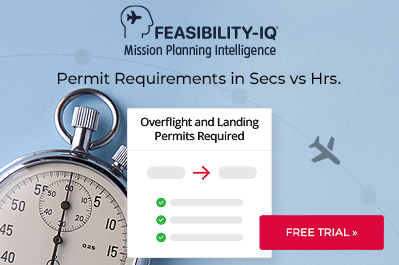Top Considerations for Business Jet Operations to Hilo (PHTO)

This business aviation blog post is part of a series on operating in Hawaii and continues from our last article: “Top Considerations When Operating to PHNY.”
Hilo (PHTO) is a quiet location with no congestion issues affecting General Aviation (GA) movements. PHTO serves as an ideal quick turn between North America and the Southern Pacific or Asia. It is not as busy as Kona (PHKO) and closer to great circle on certain trans-Pacific routings.
If you are planning a mission to PHTO, the following is an overview of what you need to know:
1. PHTO is a smaller-scale airport
This airfield has two sides – a newer side for scheduled commercial operations and an older side for cargo and GA movements. The GA side is not usually busy and can accommodate aircraft up to wide-body equipment. There are no Stage 2 noise restrictions at this location. Airport security is 24/7, and crews can be escorted to their aircraft – by Fixed-Base Operator (FBO) personnel or an airport security officer – at any time. Runways, taxiways, and ramps at PHTO are in good condition. While some areas of the runway are currently being repaved, this does not impact airport movements or cause operational delays.
2. Parking is always available
PHTO is not a busy or high-traffic location, and there’s always plenty of room for ground handling and aircraft parking. This is also the preferred alternate for overflow parking when Kona (PHKO) is full – over the Christmas period for example – and for extended-stay parking. Parking stands at PHTO are power in/out, so towbars are almost never needed.
3. PPR is required for this location
Prior Permission Required (PPR) is necessary for all aircraft traveling to PHTO, and 24 hours’ advance notification is advised. Short-notice PPR requests may be accommodated at discretion of airport authorities.
4. CIQ is available 24/7
PHTO is a 24-hour airport of entry with full-time customs/immigration availability. Customs, Immigration, and Quarantine (CIQ) can be cleared either onboard or at the FBO, and 24 hours’ advance notification is preferred. CIQ normally takes less than 10 minutes, depending on number of passengers, with inbound luggage screening at discretion of the inspector. If you anticipate an estimated time of arrival delay of 30 minutes or more, it’s best to notify customs/immigration. Please note that the U.S. Department of Agriculture needs to screen all luggage on departure for domestic legs as there are certain agricultural items that are not permitted on the U.S. mainland. Restrictions on movement of fruit, plants, live snails, and other items from Hawaii to the mainland are enforced to prevent the spread of fruit flies and other hazardous plant insects and diseases.
5. PHTO makes an ideal tech stop
Turnaround time for technical stops here is about 45 minutes on average. For international quick turns, crew members/passengers need to clear CIQ, and this can usually be done onboard with 24 hours’ prior notification. Be sure to provide prior notice for any in-flight catering requirements associated with technical stops at this location. PHTO is a friendly and accommodating location, and your ground handler can even arrange hula dance presentations for passengers during quick turns or on arrival/departure.
6. Fuel is available 24/7
Jet A is available 24 hours, and the FBOs have dedicated GA fuel trucks. For large-volume fuel uplifts, 24 hours’ advance notice is best as fuel is obtained from a fuel farm. No hydrant fueling is available at this location.
7. Consider catering and other services
As there’s no certified in-flight caterer available at PHTO, lead time is needed when ordering catering. Your FBO can help coordinate catering deliveries from local hotels/restaurants. There are no limitations on liquids for catering deliveries for your aircraft. Catering from commercial restaurants is normally delivered to your FBO, where on-site secured refrigeration is provided.
8. Local hotel and transport options are always available
Most hotels in the Hilo area are 3-star properties located within a few minutes of the airport. Hotel availability is usually good; however, accommodations can fill up during the week-long “Merrie Monarch” festival which honors the legacy left by King David Kalakaua and takes place close to Easter each year. Rental car facilities are available, and cars can be delivered to your FBO. Although Hilo is a “quiet” area – quite a different pace from Honolulu – there are popular restaurants to try and local sights to see. Try the local Hawaiian cuisine and, if you have the time, a visit to Volcanoes National Park (established in 1916) is worthwhile. Kilauea and Mauna Loa, two of the world’s most active volcanoes, are both located on the island of Hawaii. There are helicopter tours that provide daily sightseeing trips.
9. Weather challenges are minimal
Rainy season is November-March, and tropical showers occur daily. Visibility may be somewhat reduced on occasion due to volcanic activity related to nearby lava flows, but this is not an impediment to GA operations.
Conclusion
PHTO makes a great destination or GA tech stop with full-service availability, friendly FBO staff, lack of airport congestion, and plenty of aircraft parking. Be sure to arrange a PPR for this location and try to provide at least 12-24 hours’ notification for in-flight catering and any other aircraft service requests.
Questions?
If you have any questions about this article, contact Christine Vamvakas at christinevamvakas@univ-wea.com.




